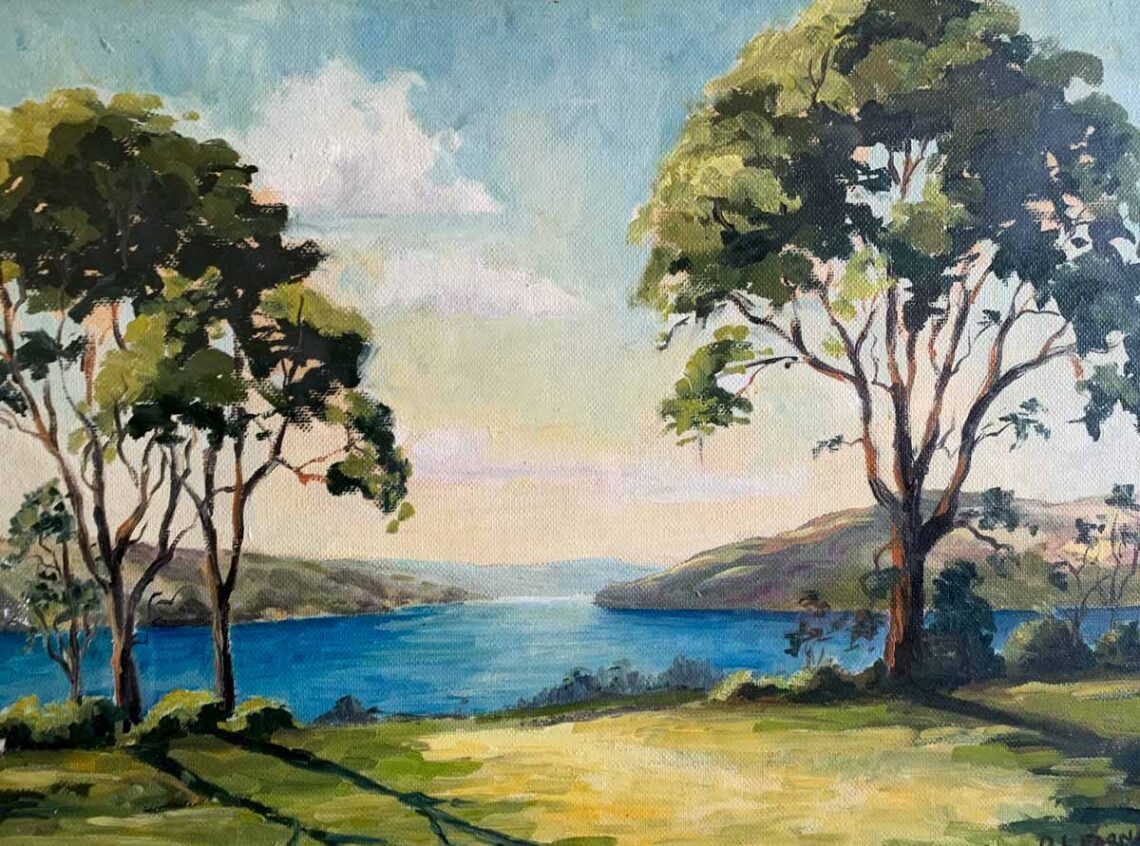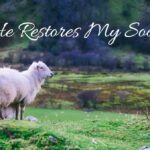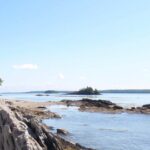Over the years I only glanced at this oil painting As a young child I came to know it as a painting of Skaneateles Lake; my place of origin. From my point of view while growing up, it was only a familiar picture decoratively featured in various family locations. Countless times I had quickly passed by it, but never had I stopped before it to intentionally look.
Later in life I learned that the artist was my mother She had painted it as a young college student. If I looked really close, evidence was her finishing signature D. LEARN (maiden name) painted at the bottom right hand corner.
The artist is now no longer young A decade ago she had to finally hang up her brush. As a young centenarian my mother’s eyes have grown dim and her hearing faint. Yet the artist still paints. On one recent trip to visit my mother she told me that in her head she “sees” earlier paintings her eyes no longer can view. It is there that she also re-creates her works, with colors her brush can no longer paint. In doing so she still finds pleasure.
Recently I stopped working at my desktop After being too consumed with burdening busyness I pushed back from the screen. However as I did, something caught my eye. It was the enlarged image which earlier I had randomly selected for my homepage – this very painting. I paused to curiously study it, up close and personal, as if viewing it for the first time. A flow of multiple questions began flooding my mind, and with them grew a primary desire of my heart.
If I could only ask “the artist” right now:
- Where was the location of this view which inspired you to creatively paint?
- How did you begin to work on this once blank and untouched canvas? Was it with light pencil sketches determining perspective, or did you go straight to the brush in a particular place?
- What colors did you first mix on your pallet? Were they for the hues brushed just above the horizon? Were they for the faded distant hills, with their familiar contours?
- How did you transition the sky which changes from the yellowed horizon up to pastel blues hidden behind puffy, white, cumulous clouds?
- Was it hard determining the natural shades of blue; rich colors reflecting the sky above as well as separating the hillsides from the shaded water of the lake? Was it also difficult mixing colors to create sunlit wooded hills which rise up from both sides?
- Were those two matured and towering trees in the foreground actually painted before their background? And, did you stroke your brush upward forming solid trunks and weathered limbs? Then did you freely use thinner strokes outward becoming lofty branches of your choosing? How?
- And those varied tones from your pallet of light-brown to orange-brown, and gray to black, to create the tree trunks, were they also strategically brushed with the position of the sun in mind? Was it the same with the varied tones of green that form the leafy summer canopy above each tree?
- Did you first have to determine the position of the sun (off canvas)? If so, the angle of the shadow cast from each tree must also have had to align just right.
- As an artist did you ever make mistakes, leaving you feeling discouraged, like you ruined the whole painting? How did you learn that with patience those mistakes could be made into something else, perhaps actually adding beauty to the big picture itself?
- When did you come to understand that only the artist knows those mistakes made? And, when did you accept that most, in passing, only look at your labor of love yet never see?
- What kept you painting this work; coming back to it time and again? Was it treasuring the view your eyes first saw? Was it delighting in the work of your brush?
- Finally, how did you determine when this painting was finally finished; ready to sign with your name? And to your mind, were all your paintings ever really completed?
Then suddenly, what was earlier unforeseen, opened my eyes to the bigger picture…
This study of the art became study of the artist In that moment, I saw both the work (painting) and the Worker (Painter). What was I supposed to learn from both?
- My initial observations led to internal questions.
- My intuitive answers became insightful lessons.
- My lessons from a painting became my principles for Life.
The artist
- Sees when others just look
- Stops from other activities to appreciate the view
- Ponders what eyes see, and is inspired to re-create it on canvas
- Sets apart intentional time to creatively engage the work
- Values painting as a process over time, which cannot be forced or rushed
- Determines perspective before beginning to paint the picture
- Mixes colors from the pallet to match the angled sunlight affects on the subject at hand
- Intends each brush stoke and it’s placement on the canvas
- Realizes mistakes made are better redeemed than covered up or brushed over
- Walks away from the work in order to be refreshed; restored to later to return with the brush
- Finds delight in, and love for, the activity of painting as well as the painting itself
Do you see any principles for your Life in these? (No matter what your work/working is)
My young life was viewed at passing glance, while anticipating “the next thing.” Much of my midlife was also similarly viewed; often looking but rarely seeing. The Worker easily became a burdened pastor, easily losing perspective with little time for process. The work was that of pressured pastoring (“24-7”). At times I lacked inspiration, struggling to rightly mix colors on my pallet, making mistakes. There was no rhythm of intentionally stopping to pull away and ponder the view; “the Big Picture” before me. Likely this also affected the healthy process required. Now in my senior life, a single question remains: “What must change, while you still have eyes to see?” Is that my question, or is The Master Artist asking me?
One day each of us will have to “hang up the brush” Many things in life are easily taken for granted or aren’t appreciated until they are taken from us. That I personally know! Yet it is only by stopping to study, or pausing to ponder, that I can “see” what my eyes earlier missed.
What do your eyes see?
“But blessed are your eyes because they see, and your ears because they hear.” Matthew 13:16
—RWO/MAST







Comments by Ric Ochsner